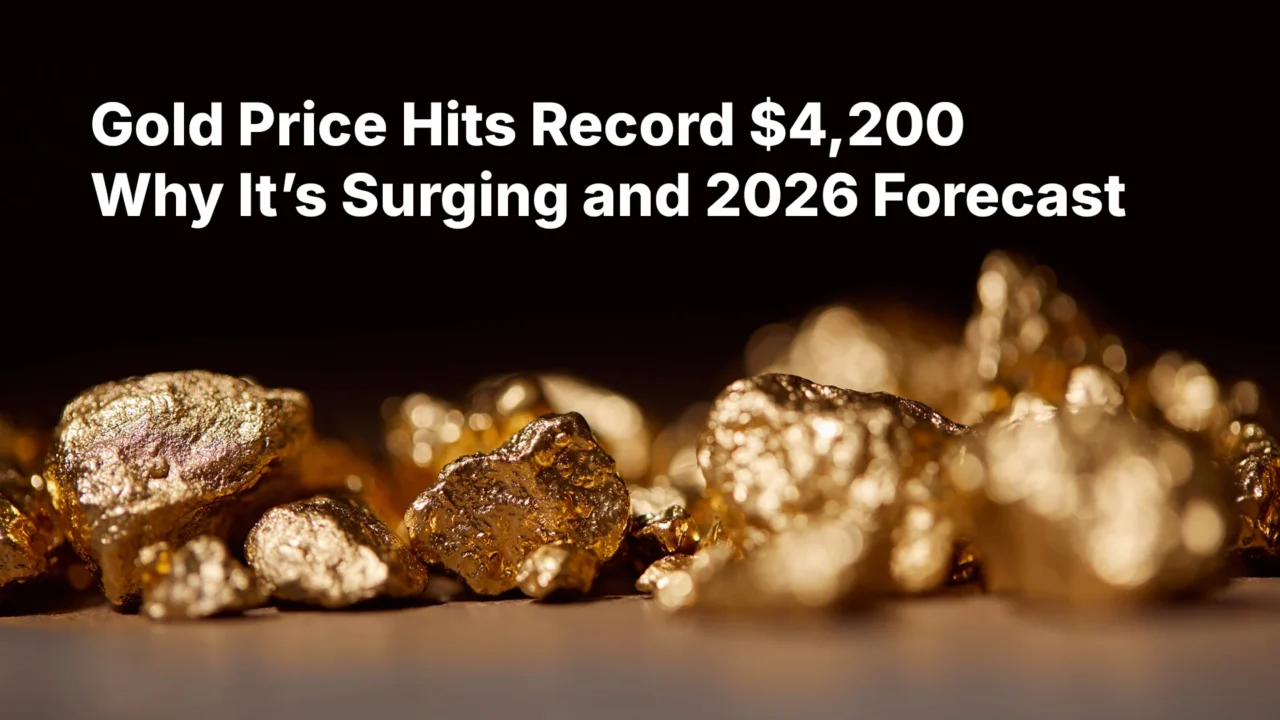
Gold’s Record-Breaking Rally: Safe-Haven Surge Amid Global Turmoil
Gold has long been the ultimate insurance policy for turbulent times, but this year’s blistering rally is rewriting the rulebook. Spot gold soared to $4,200 per ounce on Tuesday, capping a eight-day sprint that saw the metal breach $4,000 last week—a psychological milestone that triggered fresh waves of buying from jittery investors and central banks alike. Year-to-date, bullion is up more than 56%, outpacing stocks, bitcoin, and even silver’s 80% surge. As the U.S. government shutdown drags into its second week, with threats of mass layoffs looming from the White House, gold’s allure as a “fear trade” has never been stronger.
The latest leg up—a 5% jump since October 7—coincides with a perfect storm of risks. President Donald Trump’s renewed tariff threats against China have reignited trade war jitters, echoing the April escalation that first propelled gold above $3,000. Political chaos abroad is piling on: France’s government collapsed just days after forming, deepening Europe’s instability, while Japan’s bond yields spike on inflation fears. Add in simmering conflicts in Ukraine and the Middle East—despite a fragile Israel-Hamas ceasefire—and investors are piling into bullion as a hedge against everything from stagflation to dollar debasement.
Why Gold Prices Are Surging in 2025
This isn’t just panic buying; it’s a structural shift. At the core is the Federal Reserve’s pivot to easing: Markets now price in a 97% chance of a 25-basis-point cut this month, with two more by year-end, weakening the dollar and slashing the opportunity cost of holding non-yielding gold. Trump’s attacks on Fed independence have amplified this, eroding faith in U.S. Treasuries as the “risk-free” asset and driving a “run it hot” trade where gold supplants bonds.
Central banks are the unsung heroes here, gobbling up 64 tonnes monthly—below forecasts but poised to accelerate post-summer lull. China’s People’s Bank leads the charge, diversifying reserves amid frozen Russian assets and de-dollarization fears. Retail and institutional demand is equally voracious: Gold ETFs saw a record $17.3 billion inflow in September alone, part of $64 billion year-to-date, as Western investors rotate from equities. Technicals scream momentum too—the Relative Strength Index at 87 signals overbought, but “fear of missing out” is overriding caution. As BNP Paribas’ David Wilson put it: “Everything that drives gold is happening at once.”
Gold Price Forecast: $4,200 by Year-End, $5,000 in 2026?
Consensus points to further gains through December, with prices likely averaging $3,800 to $4,200—implying modest upside from current levels. UBS sees $4,200 by year-end on sustained rate cuts and safe-haven flows; Goldman Sachs holds at $4,000, citing sticky ETF demand. A swift end to the shutdown could trigger a 5-7% pullback toward $3,800, but renewed tariff hikes or Middle East flare-ups would easily reclaim highs. J.P. Morgan pegs Q4 at $3,675, a more conservative call amid overbought signals.
Looking ahead, 2026 could extend this epic run, with forecasts clustering around $4,500 on average and peaks near $5,000. Bank of America just hiked its target to $5,000, betting on 14% investment demand growth amid persistent inflation from tariffs and supply shocks. Goldman Sachs eyes $4,900 by December, fueled by 70 tonnes monthly central bank buys and Fed funds dropping another 100 basis points. J.P. Morgan and HSBC concur on $4,000 by mid-year, with upside to $4,400 if geopolitics stay frothy.
Risks? A Trump-Fed truce or booming U.S. growth could cap prices at $3,600, but stagflation—high inflation, low growth—remains the base case, per deVere Group. Extreme bulls like Peter Schiff whisper $10,000 by decade’s end on full-blown debasement, though that’s outlier territory.
For now, gold isn’t just rallying—it’s reasserting its throne. In a year of shattered norms, the ancient metal reminds us: When trust erodes, timeless value endures. Investors, take note: This bull may have legs.
